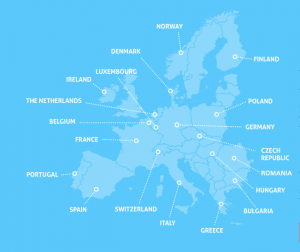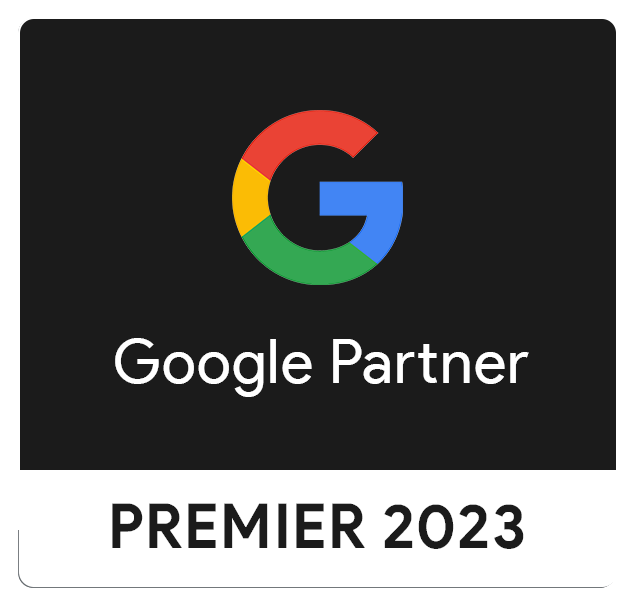What is the international success formula? That, of course, is what everyone wants to know. One way to find out is to learn from successful companies. What is the secret of the fastest growing companies in the CrossBorder Top 30 and the winner of the CrossBorder Award? Over 50% of the fastest growing internationally oriented companies sell through their own webshop and marketplaces. Remarkably, the fastest growing CrossBorder company, the no. 1 in the Top 30, DisQounts International B.V., realized its growth with only sales via marketplaces and dealsites. So selling through Marketplace is definitely one of the success factors for selling across the border. Logical, because through marketplaces you can easily reach consumers in other countries. A webshop is important when you want to build a brand, though. We saw that with FatBoy, winner of the CrossBorder Award for the best international marketing case. Whatever you choose; marketplaces, your own webshop or a combination, there are 3 clear stages that international e-commerce companies go through.
1) It starts with Belgium

With the SEO of the .nl webshop, companies participate directly on Google.be and work mainly with Dutch CPC and affiliate campaigns. This can easily be set up from the existing Dutch infrastructure. In terms of localization, there are hardly any changes compared to the Dutch webshop. However, the most popular payment method Bancontact/Mister Cash will be added and the logistics will be adapted to Belgium.
What is further noticeable about companies with a webshop is that 88% offer international shipping, but that only 13% of the of purchases come from abroad.
2) Expanding and locating
Most CrossBorder Top 30 companies operate primarily within Europe. After Belgium, Germany is the most popular, followed by France and the United Kingdom. Marketplaces allow you to monitor whether your products are catching on outside your home market. Compared to setting up a completely localized and translated webshop, offering your products on international marketplaces is relatively easy. Of course you have to translate your assortment and invest in findability on the marketplace, but you don't have to attract consumers to the platform. Amazon is internationally the most interesting for Dutch companies and relatively easy to join. In Germany, Amazon and eBay account for 66% of e-commerce sales. Other popular marketplaces are eBay, Cdiscount, Otto, La Redoute and Real.de. If your products sell well through marketplaces, you may decide to set up a localized webshop. After all, you know what your top products are thanks to sales on the marketplace. The product pages for those products you need to SEO optimize and push through SEA and social media. This way, the marketplaces and your own webshop reinforce each other.

In Europe, you potentially reach 445.7 million e-commerce consumers. Localization plays an important role in international expansion. Besides a good seo-optimized translation, you have to take into account the different shipping and payment methods, quality marks and legal specifications in a country. The more it looks like your webshop is actually from the consumer's country, the greater the trust, the sooner the consumer will buy.
Having an international web shop is one thing, consumers then have to find you. That requires an investment in performance marketing. It is a challenge to gain market share in foreign markets with Google, Google Shopping or social media. Due to low brand awareness and not having years of optimized CPA campaigns, the cost per new customer is often a lot higher than in the home market. In addition, the "free" channels such as good SEO positions (low backlink authority), a large email database and direct traffic to the website are missing. Most Top 30 companies achieved international growth with their own webshop by hiring native speakers or outsourcing the marketing to specialized agencies.
3) Brand building and focus markets
When you reach the first proverbial ceiling with performance marketing, companies move on to brand building in their focus markets. You can clearly see this in the entries for the CrossBorder Award, the award for the best international marketing campaign. Award nominees all indicated that marketing budgets have shifted from offline to digital. In one case, the campaign was supported with visibility around relevant programs on TV.
The CrossBorder Award nominated companies; Eurail, Amsterdenim, Body & Fit, NorthSails and Fatboy launched a creative video campaign around their product. Despite the companies having five completely different products and target audiences, the approach was fairly similar; distribution of the messages was largely through Youtube, programmatic Display and social media.

Conclusion
The first quick-win to selling crossborder is starting with marketplaces and opening your webshop to the Belgian customer. If you opt for European shipping, make sure your website is well translated and localized with appropriate delivery and payment methods, especially for key markets. With a German website you not only reach German consumers, but also consumers in Austria and Switzerland. If your international webshop is well set up then you need to start investing in brand building. With a well thought-out marketing campaign around a product with PR value, you can already achieve a lot with a relatively small budget. Being active with your own webshop and on the largest marketplace in a country strengthens your market position. [vc_separator][vc_video title=”The best of CrossBorder E-commerce” link=”https://youtu.be/yjGJXwzAXnw”]]]>
Trending
- Live within two weeks with dexport Shop Launch Los geht's
- Need localization? Arrange your German return address through Dexport Los geht's
- Six months of free selling on Kaufland?Los geht's
- Accelerating your growth on Amazon? Los geht's
- Working with the best German marketing team in the Netherlands? Los geht's
- Boosting your sales with our German influencer network? Los geht's
- Live within two weeks with dexport Shop Launch Los geht's
- Need localization? Arrange your German return address through Dexport Los geht's
- Six months of free selling on Kaufland?Los geht's
- Accelerating your growth on Amazon? Los geht's
- Working with the best German marketing team in the Netherlands? Los geht's
- Boosting your sales with our German influencer network? Los geht's


